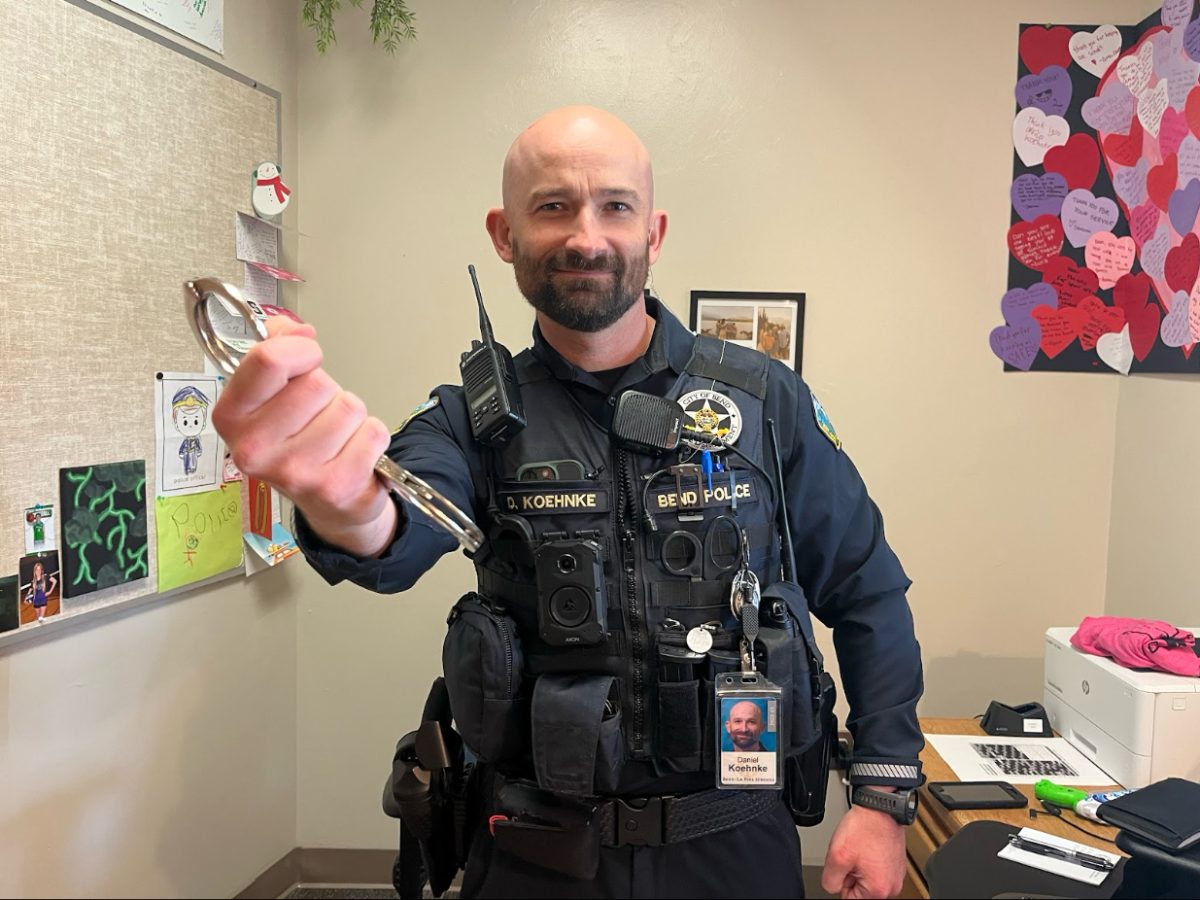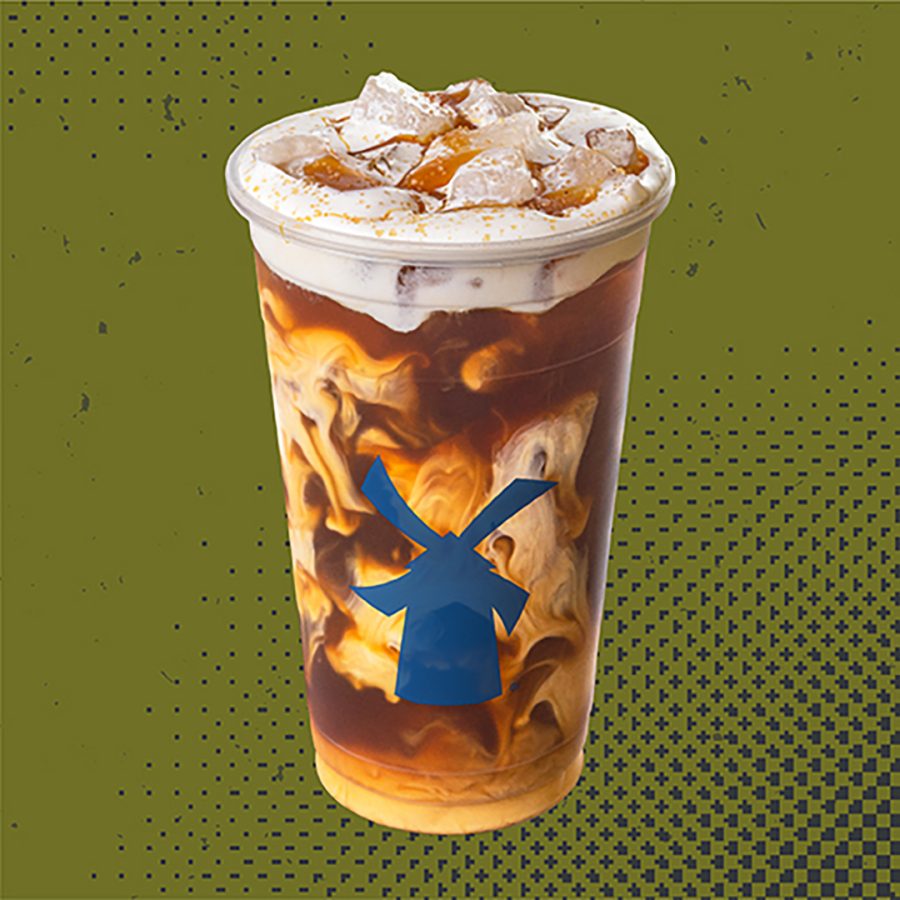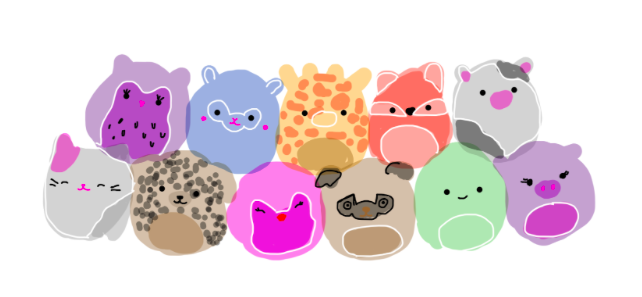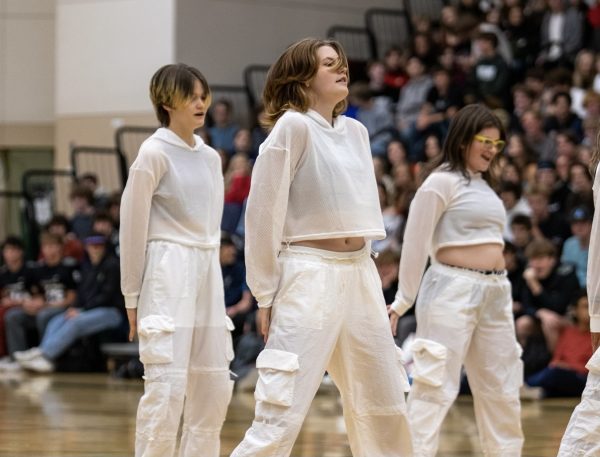It’s 6A.M on a Tuesday morning. Subarus decked out with Summit and Bend High stickers line the Fred Meyer parking lot as piles of ambitious teenagers bombard the grocery store’s front doors. They are on the hunt for plushie stuffed animals named Squishmallows, hoping the shelves have been restocked.
As the Covid-19 pandemic continues to wreak havoc on every aspect of life, high school students have sought nostalgic and comforting tokens to fill the void of missed teenage years. Childhood keepsakes ranging from all forms—stuffed animals to books and TV series—enable normalcy-seeking teens a chance to reconnect with the old while facing the adversity that halts the new. Re-reading, re-watching, and reminiscing over past trends has distracted Gen Z’ers from the horror, division and negative aura that embodies modern day society.
Ava Lin Gardner, a Summit Junior and squishmallow collector describes a new-found sense of comfort in what may seem like a childish trend.
“I’ve been collecting squishmallows because they’ve honestly made me so much happier through this tough time, especially with Covid-19 and all the craziness in this world,” Lin Gardner said. “My friends and I started collecting them as a fun activity when we really couldn’t do much else.”
These colorful, pillow-like stuffed animals have exploded over social media—even popular influencers such as Charli D’Amelio have endorsed the mainstream brand. With name, personality cards and various pronouns attached, these plush-toys bring comfort and nostalgia for teens longing for a return to normalcy from the pandemic; and in some cases, an alternate source of income. Peer onto any teen-dominated virtual marketplace such as Depop to find “sought after” Squishmallows ranging up to $100. Gardner, akin to other depop sellers, has gained a profit off of specific ‘mallows.’
“I think the main reason that people pay double or triple the price has to do with the demand for certain animals,” Gardner said. “The ones that pop up on popular social media platforms like TikTok typically go for higher prices and become more sought-after.”
Similar to Gardner, another Storm junior, Mackenzie Ferguson, has recently picked up this light past time. Allotting over twenty Squishmallow’s, Ferguson has even trekked to Fred Meyer early before school in hopes that shelves had restocked with the rarest ‘mallows.
“Squishmallows have definitely become so popular because of the unique time we are in,” Ferguson said. “It’s hard to develop new trends while we’re stuck at home, so it’s so easy for us to resort to old habits.”
As teens continue to allocate more free time to online platforms in a pandemic-dominated world, virtual communities have emerged in place of social withdrawal. .
“In this time of crisis, Squishmallows have provided an outlet for teens, connecting them with others going through similar situations through the collection of these stuffed animals,” Ferguson said. “Collecting these items and sharing them with the online community has added something new to my otherwise repetitive routine.”
The collection of plush stuffed animals isn’t the only nostalgic trend that has developed niche teen audiences throughout the pandemic. TV shows, bands and fashion trends have taken mainstream media by storm over the past year—especially with platforms like Netflix adding 2000s shows such as iCarly and Avatar: The Last Airbender available to stream.
Despite not watching it during its original release in February of 2005, Matthew Shrader-Patton, a Summit junior recently developed a passion for the “world-building” cartoon.
“I think the rise of popularity in older shows is definitely due in part to nostalgia, but also the fact that it’s a kids show,” Schrader-Patton said. “The warm feeling one gets from watching, or re-watching a show geared towards kids where things always resolve themselves favorably in the end was definitely needed during the onset of the pandemic.”
Avatar’s spiking of optimism in pandemic-drowned teens is emulated in Netflix’s “most-watched” lists during early quarantine months. According to Forbes, Avatar: The Last Airbender topped charts as the most-watched television series in early May.
Megan Lasala, a Storm senior, has also been fatigued from the repetitive and unvaried schedule that a lengthy pandemic has given rise to. Seeking to spice up an often solitary lifestyle, old books and shows have offered an escape from day-to-day life—a source of warmth in a shivering world. In this fashion, Lasala has adopted old novels such as Harry Potter back into her life throughout quarantine.
“I read books like that [Harry Potter] as a kid,” Lasala said, “I think myself and other teens have picked them up again because of nostalgia and boredom.”
As we continue to mask-up and self-isolate, teens everywhere will continue to seek out older trends, books and shows to reap the nostalgia of better days, and to connect with others.

































































